If you want to start building an aquaponics system at home, read on. This introduces how anyone can build their aquaponics system at home using a simple aquaponics fish tank (even if you haven't tried anything like this before). It's a small system that can be set up with minimal expense, even if it grows herbs for the kitchen with some fish.
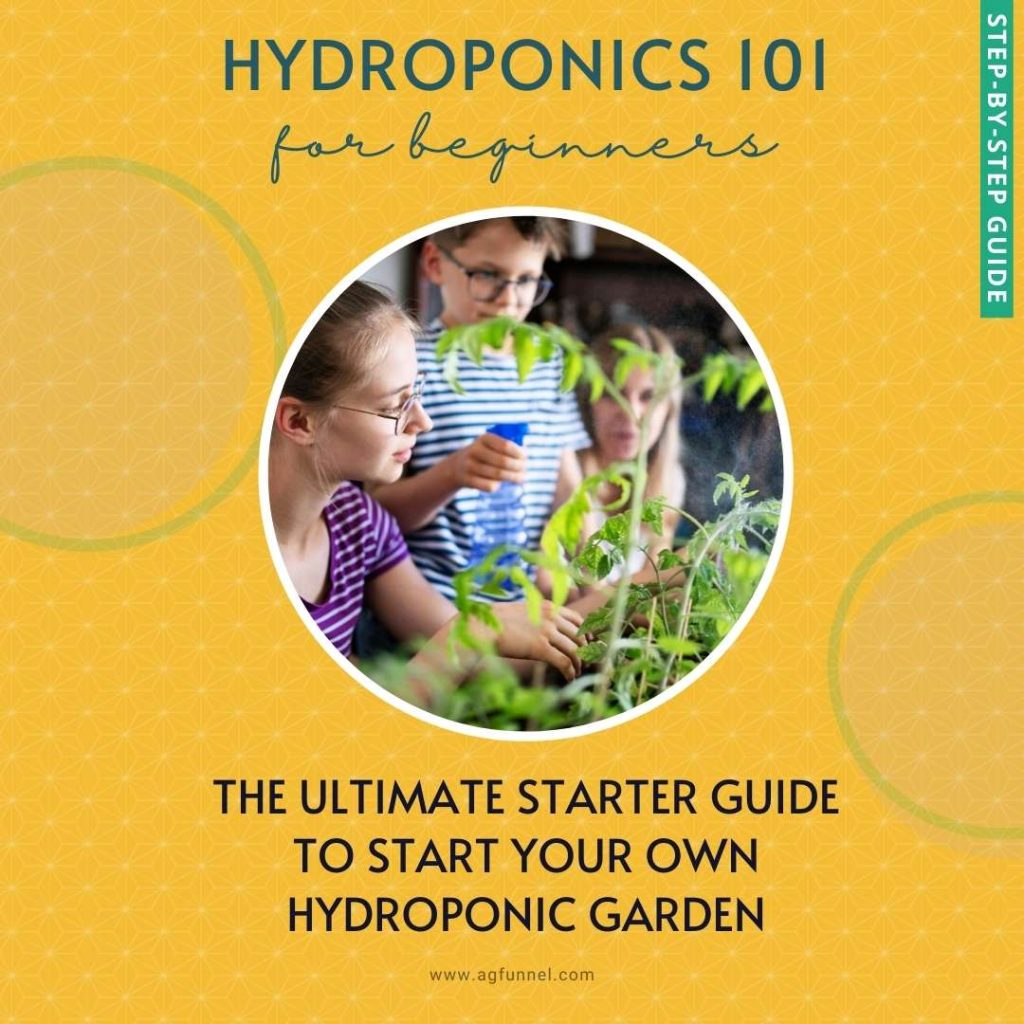
Getting Started In Hydroponics? Download our ultimate starter guide to build your own hydroponic system
How To Set Up An Aquaponics System At Home Using An Aquaponics Fish Tank?
Aquaponic gardens are a growing trend in home gardening and hydroponics, providing fresh produce, fish to eat, and a pleasant environment!
Aquaponics is the practice of growing plants using nutrients (fish excretion). It is a type of aquaculture in which fish waste (or any other aquatic animal waste) serves as nutrition for plants grown hydroponically.
Aquaponics is an efficient system of growing vegetables using only 10 percent of the water required in soil farming, without chemical fertilizers, pesticides, or herbicides.
There are different aquaponics kit available online for an easy start!
What Is Aquaponics?
The word derives from 'aqua' for water and 'ponics' for agriculture. It's a modern take on hydroponics that includes raising fish to help provide nutrients for growing plants.
Aquaponics combines aquaculture and hydroponics. It is also called a combined recirculating aquaculture system (RAS).
It is an aquaculture method in which the water from farmed fish ponds or tanks is used for hydroponically grown plants.
These systems are also known as a symbiotic relationship between plants and aquatic animals, where one helps achieve optimum growth without the need for more expensive chemical fertilizers.
In Aquaponics, you can grow different vegetables, herbs, and leafy green vegetables. You can also grow different types of fish in the fish tank.
With a small footprint, it is a great way to start your aquaponics system at home.
How Does An Aquaponics System Work?
Aquaponics gardening uses a simple fertilization system that uses fish waste to feed the vegetables.
It works because plants filter out pollutants from the water, and this clean, filtered water is used to help the fish grow.
The basis of most systems is to have a small tank where you keep the fish and another container where you grow plants.
The water is pumped from the hydroponic fish tank into the grow bed, where the plants are grown. The water is then recycled back into the aquaponics fish tank.
The benefits of an aquaponic system are many. The fish provides nutrients for the plants; in return, the plants filter out toxins from the water.
This is a sustainable process and helps you grow organic food for your family while helping you save on grocery costs.
DIY Aquaponics Fish Tank: How to Build Aquaponic System in 10 mins?
If you're interested in starting an aquaponics system at home or need some tips for setting up one, keep reading below because we'll take step by step through everything that goes into building this no-fuss eco-friendly aquaponic system at home.
To build your Aquaponics on a small scale, you need the following equipment:
Fish tank:
If you want to build an aquaponics system for your home, the first thing that you will need is an aquaponics fish tank. The size of the aquaponics fish tank depends on how many fish you want to raise and how many vegetables you plan to grow.
Grow bed:
The grow bed is where you will place your plants. People generally use heavy-duty plastic trays for this purpose.
The grow bed should not change the pH of the hydroponic media you use.
In aquaculture, the fish produces ammonia and nitrites, which are then converted to nitrates by beneficial bacteria (nitrifying bacteria). These nitrates are then used to feed the plants.
Your grow bed is where the nitrifying bacteria need to be accommodated.
Aeration:
Installing an aerator at the top is advisable to prevent odors from building up in your tank.
You can use an air stone, a small aquarium bubbler, or an air pump for this purpose. It also helps to oxygenate the water.
Water pump:
The water in your tank will pass through the grow bed before returning to the aquaponics fish tank.
To ensure enough oxygen is supplied to the plants and the fish, installing a submersible aquarium water pump in the system is advisable.
The pump's power depends on how big your aquaponics fish tank is.
Filter media:
The filter media in this system will help remove solid waste from the water and act as a home for beneficial bacteria.
You must also consider purchasing hydroponic grow media like rock wool, clay pebbles, or gravel.
Gravel is cheaper than the other types of growing media and easier to find, but it can't hold nutrients as effectively.
There are many different kinds of filter media available such as:
- K3 Bio Filter Media
- Aquarium Bio Sponge Sheet Filter Media
- Activated Carbon Charcoal Pellets
- Aquarium Filter Pad
Anchoring system:
If you want your aquaponics garden to last a long time, installing anchoring systems to keep the tank and the grow bed in place is advisable.
You can use either heavy-duty suction cups or install the system on a flat surface. Using small pebbles on the grow bed may also help sustain the plant's weight growing in the system.
Water testing:
Before you transfer water from the aquaponics fish tank to the growing bed, it is advisable to test water quality for possible pollutants.
You can buy an aquarium test kit from pet stores or online retailers to help determine whether your system is ready for planting.
The pH test kit also helps to measure the pH, ammonia, nitrite, and nitrate levels. This is important because it will tell you whether or not your system is running correctly.
Step-By-Step Guide To Build Your Aquaponics System:
Here is the step-by-step guide to building your aquaponics system at home.
Step 1: Set up the aquaponics fish tank
- First, you must acquire a fish tank that you normally use to decorate your house.
- Now, you would say, what about the size of the aquarium? Well, it's your choice to choose the size.
- You'll need to adhere to all of the necessary protocols for fishkeeping. The size requirement for your fish tank may vary depending on the fish you choose.
- But remember that the bigger the fish tank more plants you will get to grow.
Step 2: Prepare the grow bed.
Grow bed is the container where you will grow your plants. For this purpose, you can also use a plastic tray (preferred heavy-duty).
- It would be best to keep the ratio between the size of the fish tank and that of the grow bed at 1:1 to ensure that the grow bed can rest firm and stand above the fish tank.
- Fill the media bed with your selected media once it's finished. Clay pebbles are among the most commonly used media in-home aquaponics systems due to their properties. They are pH-neutral and won't impact the quality of your water. They also retain a lot of moisture.
- You can also use the gravel in your grow bed as an anchor to sustain the weight of some fast-growing vegetables, such as lettuce.
Step 3: Set up the circulation
- Ensure a water pump is attached to the system to extract water from the tank and carried to the grow bed, which is then recirculated back to the tank.
- Remember that there should be enough space for the water to circulate between the fish tank and the growing bed.
- You can add layers of styrofoam or crushed lava rock along the bottom of the grow bed to improve water circulation through your system.
Step 4: Build up the good bacteria
- The grow beds are usually where the nitrifying bacteria are housed.
- A few weeks before you set up the system or add any fish, it is important to dechlorinate water, allowing the beneficial bacteria to grow and develop.
- The dechlorination process also helps ensure that the fish are not harmed due to chlorine in the water.
- The chlorine content in the water can also be removed by letting it pass through an activated carbon filter and adding a de-chlorinator.
Step 5: Choose the right type of fish for your fish tank
- You need to add the right types of fish for your Aquaponics. It would help if you chose the fish according to the size of the tank, or you can decide on the fish species first and then decide on the type of tank most appropriate for your fish.
- Add some air stones or bubblers to your fish tank to add more oxygen to the water.
Step 6: Choose the right plants for your aquaculture
- Finally, you need to choose the right plants for your culture. You also need to select the right net pots according to the size of the holes in your grow bed.
The Best Fish for Aquaponics
Tilapia, Carp, Trout, Goldfish, and koi are some of the most popular fish species for small Aquaponics. They're easy to maintain, widely available, and more inexpensive to keep than other types of fish.
Factors That Affect The Survival Of The Fish In The System:
- Temperature of water
- Type of fish
- Size of fish and space required for them
- Filtration capacity
- Water Quality
Some of The Best Plants For Aquaponics Are:
- Basil
- Watercress
- Kale
- Lettuce
- Mustard greens
- Swiss chard
Basic Things To Consider While Building Your Hydroponic System At Home
Here are some basic things to consider while building your hydroponic system at home.
- Since ammonia and nitrite are toxic for fish, you must use biofilters or beneficial bacteria to convert them into nitrates.
- For aeration, you must use an air pump or air stone in the fish tank. Remember, you must not overstock fish to avoid low dissolved oxygen levels.
- Always check the pH level of the aquarium, although fish can tolerate a wide range of pH. They best thrive in neutral conditions (6.5-8.5).
- Next, use the lighting, or the grow light only when necessary; otherwise, algae will have a high chance of rapid growth.
- Next, you could choose the local plants to thrive and be maintained easily.
How To Germinate Aquaponics Seeds?
For germinating the aquaponics seeds, some of the basic equipment are:
- Growing media for the seeds
- pH down and a pH test indicator
- EC meter
- Propagator
- Heat mat
- Rooting tonic
- CFL Propagation Lights
Now the steps for the germination of seeds are given below:
- Before planting, chill your seeds for 12 to 24 hours in the freezer. This generates an artificial "winter," and when they're planted outside (warm environment), it indicates that they should germinate.
- Add 1-2ml of rooting tonic to 1L of water if you have any. Bloom roots, rhizotonic, or Roots Excelurator are examples of these items that help the plant develop more quickly after the seed has sprouted. Balance the pH of your water to 5.5 without using a rooting tonic.
- To ensure that the water is fully dispersed, soak the Rockwool cube or jiffy pellet in the solution for a minute.
- Take the Rockwool cube out of the water and squeeze it lightly, so it is damp but not soggy. The leftover solution may be used to water plants later.
- Plant the seed 2mm below the surface of a Rockwool cube if the seed is 2mm wide. Make sure the seed is touching Rockwool.
- Place the Rockwool on a lattice tray within a propagation device. Ensure that any extra water drains from the Rockwool and does not sit in the solution.
- To keep the Rockwool at a stable 25°C, use a heatmat underneath it (check the instructions on the heat mat label).
- After a few days, check the Rockwool cube. If it isn't yet moist, spritz or drops some of the root solutions on it. The Rockwool should be kept damp but not soggy. When too much water is used, the seeds and roots rot due to a lack of oxygen.
- When the seed has germinated and a leaf appears, provide the sprout with light. CFL grow lights for 18-24 hours daily are an excellent method.
- Add a solution of nutrients no higher than EC = 1.0 to the tray when roots emerge from the rock wool cube. If you don't have an EC meter, use 1/4 nutrient strength as a guide.
- Finally, transplant it into your growing medium when the seedling roots have formed from the base or there are 2-3 nodes on the seedling.
Most Common Problems in Aquaponics
Some of the most common problems in Aquaponics are:
- Higher costs for fish food and their maintenance.
- Earlier bacterial contamination of water.
- Unsustainable production level if your aquaponic system is not managed properly.
- Overcrowding fish can shorten their lifespan because you need to feed them more frequently to support their metabolism.
Future of Aquaponics
The future of Aquaponics looks great!
- First of all, more people are becoming aware of the benefits of Aquaponics.
- Aquaponics is an eco-friendly system to grow plants and fish together in a closed-loop system with the help of recirculating water.
- It offers healthy organic food production with better quality control!
- Aquaponics systems have become popular worldwide for their productivity and simplicity.
- Aquaponic systems can be set up anywhere and everywhere.
- In the future, aquaponic systems could provide fresh food for entire communities in areas without access to land or water. Aquaculture may also provide supplementary income-generating enterprises where people don't have to work so hard!
Before you decide to go ahead with the system, remember:
- Start small, and then expand your system as per your requirement.
- Consider all possible factors before building an aquaponic system at home by yourself.
- Do thorough research on fish species available in your area.
- Beware of online scams, as many people sell poor-quality components at high prices.
- The need of the hour is to build sustainable communities by using eco-friendly ways of living.
- Fish is one of the most suitable protein sources for humans, and it can be produced locally in a healthy way!
Now, what more do you need? Some best aquaponic books are available online, which are great for getting started.
If you've ever wanted to grow your veggies but didn't have the space for a garden, or it never seemed worth all that work of tilling up your yard, give Aquaponics gardening a try. It's surprisingly easy and could be more productive than traditional gardening. It's also good fun and very social; it works well as a family project or as part of a community garden if you want to do it on a little bigger scale. You can raise your tasty organic veggies, and at the same time, you'll be providing your fish with their natural supply of food too.
FAQs
What steps did you take to build a successful aquaponics setup?
Building a successful aquaponics setup requires careful planning and execution. You'll need to gather all the necessary components, assemble them correctly, and then ensure everything is functioning properly. Here are the basic steps I took to build my system: Research different fish species available in my area and choose the ones that would be most suitable for an aquaponics system. For an aquaponics system, it might be better to go for goldfish or tilapia and not for exotic types—research the fish species, growth rate, and breed time. Monitor the system regularly and ensure all factors are in working order; temperature, water, pH level, etc. Also, ensure the space is ready with proper lighting and ventilation setup.
How to get started with aquaponics?
If you're looking to get started with aquaponics, here are the basic steps you need to take:
Research different fish species that would suit your area and choose the ones that will do best in an aquaponics system.
Gather all the necessary components for your system and assemble them correctly.
Ensure everything is functioning properly by regularly monitoring temperature, water, and pH levels.
Make sure the space is ready with proper lighting and ventilation setup.
Start raising fish and growing plants in your new aquaponics system!
How to make a hydroponic solution at home? What is the DIY process of making of hydroponics system?
To make a DIY hydroponic solution at home, you'll need the following:
- Filtered Water
- pH adjuster (potassium hydroxide or phosphoric acid)
- Nutrient salts
- Container
To make the solution,
- Dissolve the nutrient salts (both macro and micronutrients) in water according to the instructions on the package.
- Check the pH of the solution; it should be between 5.5 to 6.5. Add the pH adjuster if needed until the water reaches a pH of 5.5-6.5.
- After you've set the pH level, you should check the electrical conductivity. This is the proportion of nutrients to water in terms of EC. You can use an electronic EC meter to verify the readings. The EC value must be between 0.8 and 3.0. 1.5 to 2.5 is usually a good range for most situations. Add more water if the EC is too high.
- Stir well and pour into your hydroponic system.
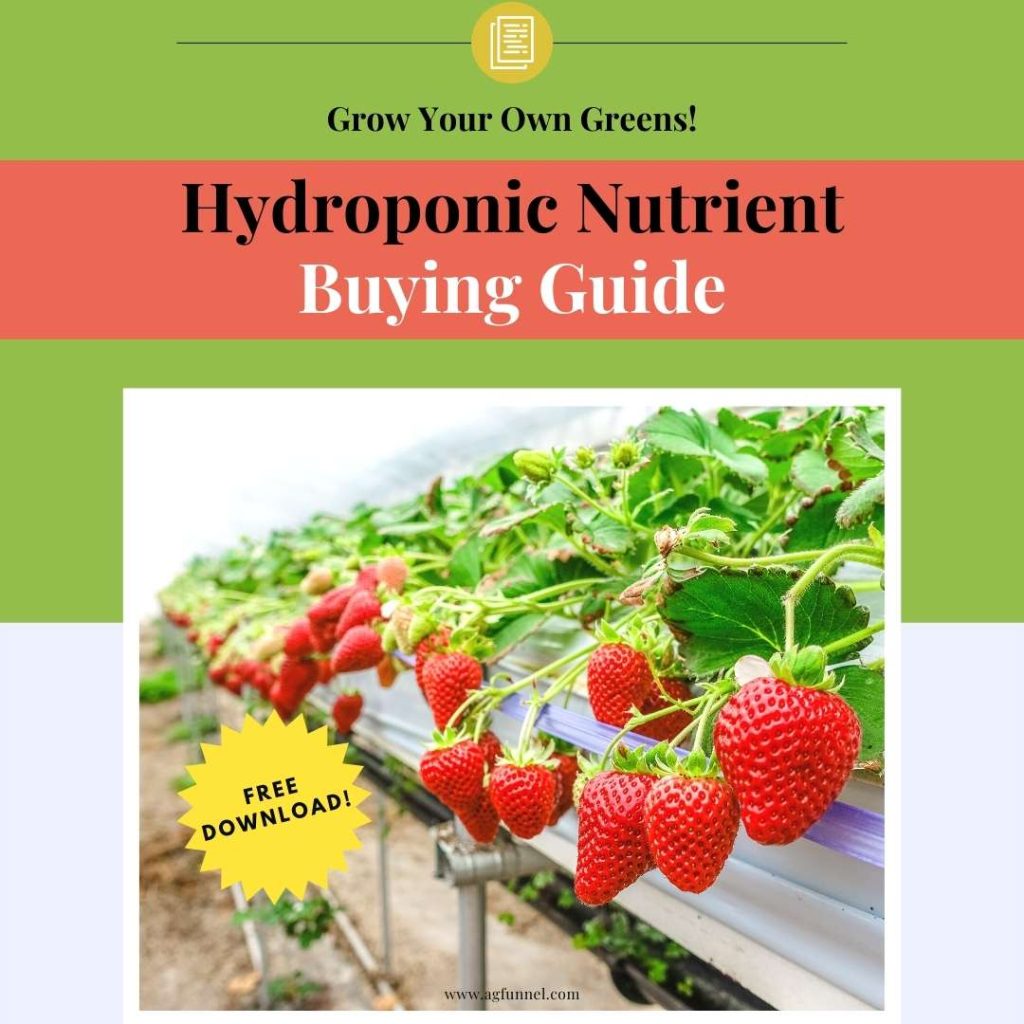
Getting Started In Hydroponics? Download our definitive hydroponic nutrients guide
What problems does aquaponics solve and why?
Aquaponics is a great way to produce your food, as it solves many problems traditional agriculture faces. Using a closed-loop system, aquaponics eliminates the need for most artificial fertilizers and pesticides and reuses all the water in the system. This saves on water usage and prevents any nutrient runoff from polluting waterways.
How to set up a biofilter in an aquaponics system?
One of the most important components of an aquaponics system is a biofilter. The biofilter is responsible for breaking down ammonia from the fish waste and turning it into nitrates. This is essential to keep the water quality high and prevent toxic ammonia buildup.
There are several ways to set up a biofilter in an aquaponics system.
- One common method is using a media filter, a container filled with a porous material such as gravel, sand, or ceramic balls. The bacteria will grow on the surface of the media and break down the ammonia.
- Another option is to use a fixed-film filter, which is a system that uses living bacteria films to break down ammonia. This type of filter can be either an open-media filter, which has the media exposed to the water flow all of the time, or a submerged-media filter, similar to the media filters mentioned earlier.
What are some tips to growing garlic in an aquaponic system?
A simple Media Bed is the best aquaponics system for garlic. We do not advise you to grow garlic using Deep Water Culture.
- Garlic is an excellent crop for growing in an aquaponics system, as it is simple to maintain and does not require a lot of nutrients.
-Generally, your garlic will do best in a neutral to a slightly acidic environment. It would help if you kept it at a pH of 6.0 to 7.0.
-For most types, a loose-fill garden or soil mix is best. In general, your garlic should be able to drain properly in its growth media. Expanded clay and gravel are excellent alternatives.
-Garlic is sensitive to direct sunlight; its optimal environment is bright sunshine with at least 7 hours of exposure each day.
-Garlic cloves must be planted 7 inches apart.
-Garlic doesn't need a lot of heat and flourishes in cooler conditions. Garlic's optimal temperature is 32 to 50 degrees Fahrenheit for the first two months. If you live in a warm region, we recommend planting your Garlic between October and December.
What devices are needed for floating raft aquaponics?
The devices needed for floating raft aquaponics are a tank, grow bed, pump, and stand. The tank is where the fish will live, and the grow bed is where the plants will grow. The pump moves the water between the tank and the grow bed, and the stand is used to hold up the tank and grow bed.
What is the scope of aquaponics farming?
Aquaponics farming is a relatively new form of agriculture that has been gaining popularity in recent years. It is a sustainable system that combines the cultivation of plants and uses a closed-loop system. Aquaponics also minimizes water usage as it reuses all the water used in the system. This can help save water usage and prevent nutrient runoff from polluting waterways. Aquaponics farming can be done on a small or large scale, making it a versatile option for farmers. Many resources are available for those interested in aquaponics farming, and the potential for this type of agriculture is great.
In an aquaponics system, what happens to worm castings?
In an aquaponics system, worm castings are a valuable resource that helps to fertilize plants. The worms eat the organic waste from the fish, and their castings help to provide the plants with essential nutrients.
Are aquaponics considered organic?
Aquaponics is considered a sustainable food production system, and it can promote sustainability by reusing all the water used in the system. This also allows for no runoff pollution. Because of this, many organic certification organizations consider aquaponic food products to be organic.
Some of the reasons to consider aquaponics as organic are:
- Synthetic fertilizers aren't used.
- Using chemical-free pest management
- It has a lower environmental impact.
- Does not use hormones or antibiotics to promote growth.
What is an aquaponics tank?
An aquaponics tank is a watertight container in which plants and fish are grown together in a symbiotic relationship. Fish waste provides the nutrients the plants need to grow, and the plants act as a natural filter, cleaning the water for the fish.
What is aquaponics farming?
Aquaponics is a type of farming that combines traditional aquaculture (raising aquatic animals in tanks) with hydroponics (growing plants in water). In an aquaponics system, fish waste provides nutrients for the plants, and the plants help filter the fish's water. This closed-loop system is efficient and sustainable and can be used to grow crops and raise fish in any climate.
Can Aquaponics Systems Help with Pest Control in Hydroponic Systems?
Aquaponics systems can indeed help with hydroponic pest control steps. By introducing natural predators, such as ladybugs or predatory mites, into the aquaponic system, they can help keep pest populations in check. This natural approach can reduce the need for chemical pesticides in hydroponic setups.
Is aquaponics sustainable, and what are the best plants for aquaponics?
This is a component of organic farming because water and energy consumption are sustainable since no external inputs are used to fertilize the plants.
The best plants for aquaponics are greens that are low in nitrogen-requiring characteristics, including leafy greens or small salad-type vegetables like baby spinach or lettuce. Plants like cucumbers or tomatoes can do well in an aquaponic system but will require more space than greens due to their increased need for nitrogen input.
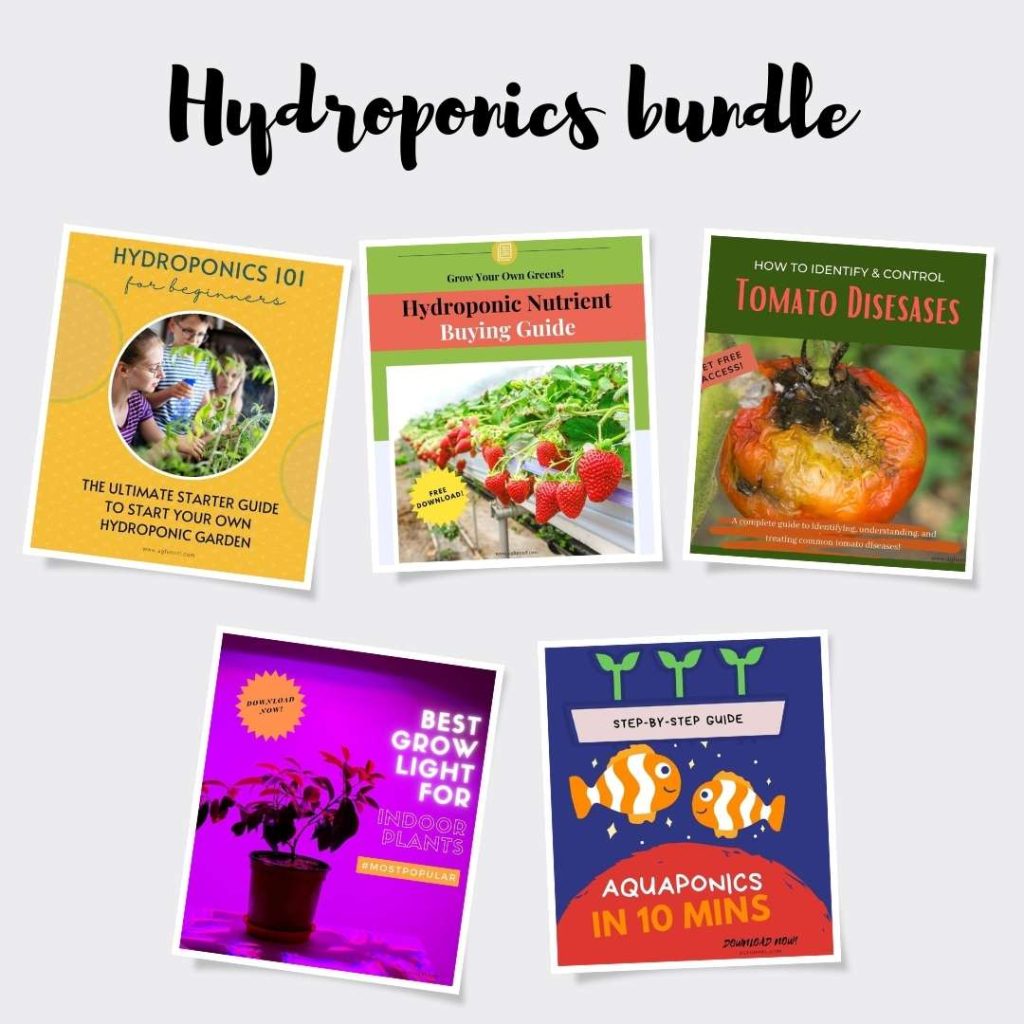
Learn everything about hydroponics, from the basics to advanced techniques.

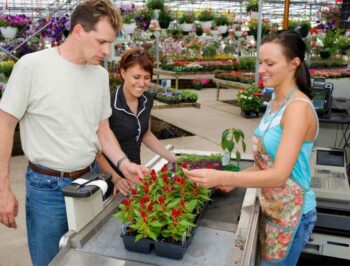
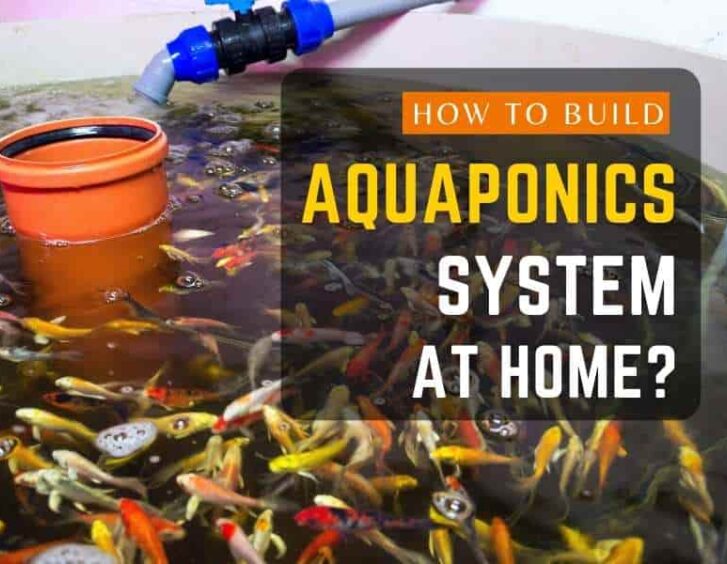

















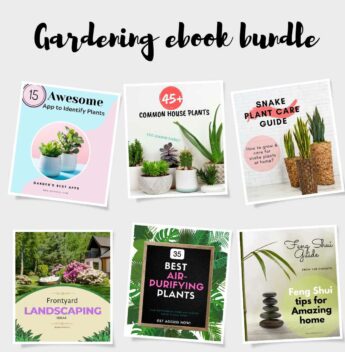
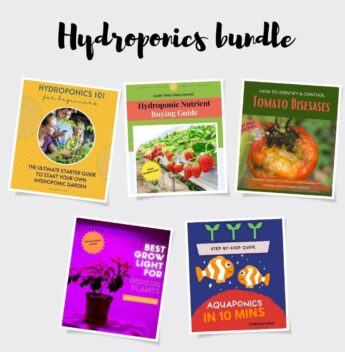

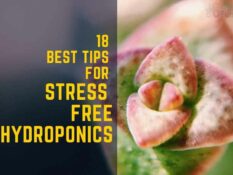
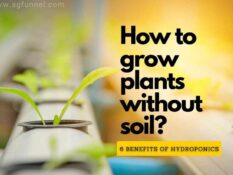
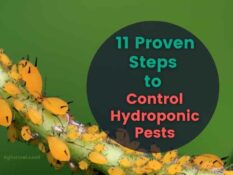
 Lalmon LLC. All rights reserved
Lalmon LLC. All rights reserved